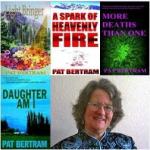Bowker released some stats showing a 6% growth in the number
of print books published in 2011 in the U.S. ;
the first significant growth in four years. In case you’re curious, the number of
print titles published last year was 347,178. Would you be surprised to learn
that the extra 6% came solely from self-published books? Without them the number
of titles would have been completely flat, although, given the number of books
already on the market, I’m not sure this would have been a terrible thing. Many
of us won’t be able to get through a fraction of the number of books published
in a single year, in our lifetime.
According to an article excerpt in The Passive Guy newsletter, most people are still reading print
books, says an analyst with publishing research firm Simba Information.
Based on my own anecdotal observations, I agree. Whenever I’m on planes or
ferries the majority of readers are holding print books. On a recent airplane
from Toronto to Vancouver ,
I spotted about six electronic reading devices, but many more people held
paperbacks. Whenever I sell books at venues, perhaps two out of every fifty
people ask if they’re available on Kindle. Sure, the ebook revolution is
growing, but it hasn’t taken over yet, and won’t be this year. You can read
more of the article by subscribing to the Passive Voice newsletter at www.thepassivevoice.com
Here’s another reason why print still rules. A recent Pew
Center



